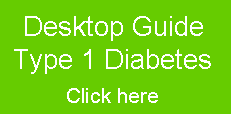 © IDF (Europe) 1999
© IDF (Europe) 1999 © IDF (Europe) 1999
© IDF (Europe) 1999
All rights reserved. No part of this publication may be reproduced, stored in a retrieval system or transmitted in any form or by any means, electronic, mechanical, photocopying, recording or otherwise, without prior permission of the copyright owner.
The International Diabetes Federation ( European Region ) ( IDF ( Europe ) ) nevertheless welcomes local reproduction of these Guidelines in whole or in part, by governmental, charitable, and other non-profit making bodies involved in the delivery of health-care. Approved non-English language versions of the Guidelines are being prepared, and must be used where available. Offers of assistance in translation into other languages are welcome. Any reproduction should be by written permission of IDF ( Europe ), and if modifications are made to suit local circumstances then this should be made explicit.
Commercial organizations in any sphere wishing to make use of these Guidelines are invited to contact IDF ( Europe ). IDF ( Europe ) has an agreement with the sponsors of this publication to allow reproduction in appropriate circumstances at a premium to the support level given by those sponsors. No permission will be given for any reproduction in association with product marketing.
The production of these Guidelines was made possible by the financial support of a consortium of industry partners of the St Vincent Declaration Initiative and IDF (Europe). The members of this consortium are :
AstraZeneca
Bayer Corporation, Diagnostics
Eli Lilly and Company
Glaxo Wellcome
Novo Nordisk
Roche Diagnostics
Servier Laboratories.
Additionally the European Diabetes Policy Group would like to thank Elizabeth Dempsey Becker of Novo Nordisk and Joachim Thiery of Roche Diagnostics for their organizational assistance and advice, and their companies for continuing their support of the original guidelines.
The Group is grateful to Hazel Glass for administrative support.
Editing of style, content and language is by Elizabeth Home.
Web page design by Philip Home.
How Do I :
Diagnose and classify hyperglycaemic states - Section 1
Ensure effective delivery of care - Sections 2-5
Promote effective self-care through education - Sections 6-7
Control blood glucose, blood lipids, blood pressure - Sections 8-14
Detect and manage diabetes complications - Sections 15-19
Manage special problems - Sections 20-21
In 1989 the European NIDDM Policy Group published its first Desktop Guide for the management of Non-insulin-dependent ( Type 2 ) Diabetes, and in 1993 that document was revised on behalf of the St Vincent Declaration Initiative.
The current Desktop Guide builds on those guidelines, in the light of newer understandings, and attempts to provide a more direct and more accessible format. Our aim here is to provide Guidelines which can offer easy access to high quality and better integrated care, while reducing health inequalities.
The greater emphasis on arterial risk factor management, rather than just good blood glucose control, is given particular prominence.
Furthermore, this time language that can be followed by the educated person with diabetes has been used, remembering that "the primary resource for diabetes care is the person with diabetes themselves, supported by enthusiastic and well-trained professionals".
In an attempt to maintain clarity, accessibility and usefulness, the current Desktop Guide remains didactic in its approach. However, a source document to be published later will go further than the previous guidelines in referencing the evidence and strength of the recommendations given here.
The aim of these Guidelines is to enable people with diabetes to have a life of normal length and fulfilment through:
The 1998-1999 European Diabetes Policy Group has worked on both the major types of diabetes - the sister publication on Type 1 diabetes appeared last year. The working group came from richer and poorer nations throughout Europe, and included people with diabetes, as well as members of multi-disciplinary teams.
Correspondence to : Professor George Alberti, Department of Medicine, Framlington Place, Newcastle upon Tyne, NE2 4HH, UK. E-mail : george.alberti@newcastle.ac.uk
Electronic file : Download as Word 97 document, HTML ( web browser ),or Acrobat Reader (.pdf) files from : http://www.staff.newcastle.ac.uk/philip.home/guidelines
International Diabetes Federation (European Region), 1 rue Defacqz, B 1000 Brussels, Belgium. Tel : +32 2537 1889; Fax : +32 2537 1981; E-mail : idfeuro@ping.be
Further information about IDF ( worldwide - the parent organization ) can be found at www.idf.org
|
M Aguilar
K G M M Alberti ( joint chairman ) S A Amiel J Azzopardi C Berne R W Bilous K Borch-Johnsen G Cathelineau P V M Cromme A Dawson R Elphick A Ericsson D R Hadden R J Heine P D Home ( joint chairman ) I Kalo T Kangas R Landgraf T Lauritzen M Massi-Benedetti A Mitrakou-Fanariotou T Pieber A Pruijs-Brands H Schatz W Scherbaum A Serhiyenko J Sieradzki P Swift L Uccioli P Van Crombrugge W H J M Wientjens M T Yilmaz H Yki-Järvinen |
Cadiz, Spain
|
M Massi-Benedetti, K Clemmensen, A Ericsson, Z Metelko, S Freel, PJ Lefebvre, V Ocheretenko, Y Tomme
A number of members of the Policy Group, personally or through their employers, hold research contracts with, or provide consultation to, governmental and commercial organizations ( including the sponsors ) with an interest in areas covered by these Guidelines.
While travel and subsistence costs of the Policy Group's consensus meeting were covered by a grant to the University of Newcastle upon Tyne by the sponsors, no member of the Group has received any fee in connection with this activity. A fee commensurate with the editorial work performed was however received by the spouse of one of the Chairmen.
A B C D E F G H I J K L M N O P Q R S T U V W X Y Z
Albumin excretion rate
Amputation
Annual Review assessments
Annual Review tasks
Anti-hypertensive agents
Arterial risk factors
Autonomic neuropathy
Blood fats
Blood glucose control assessment
Blood glucose monitoring
Blood lipid control targets
Blood pressure control targets
Blood pressure ( hypertension )
Blood pressure if raised AER
Care delivery ( consultation )
Care delivery ( organization )
Care team
Consultation
Contraception
Diagnosis of diabetes in pregnancy
Diagnosis of hyperglycaemic states
Diarrhoea
Diet
Doctor/team consultation
Driving licences
Education of patients
Employment
Empowerment of patients
Erectile dysfunction
Exercise
Eye damage (retinopathy)
Foot problems
Gastroparesis
Gestational diabetes
GIK
Glucose lowering drugs
Glycated haemoglobin (HbA1c) - assessing control
Glycated haemoglobin (HbA1c) - use in diagnosis
Gustatory sweating
Heart disease
Hypertension - treatment
Hypertension - assessment levels
Hypertension ( if raised AER )
Hypoglycaemia - insulin
Hypoglycaemia - tablets
Impaired Fasting Glycaemia (IFG)
Impaired Glucose Tolerance (IGT)
Impotence
Indicators of quality
Insulin therapy
Insurance
Ischaemic heart disease
Kidney damage (nephropathy)
Lipid assessment levels
Lipid lowering drugs
Living with diabetes
Microalbuminuria (raised AER)
Monitoring - arterial risk
Monitoring - blood pressure
Monitoring - glucose targets
Monitoring - lipids
Monitoring - quality
Monitoring - self
Nephropathy
Nerve damage ( foot care )
Nerve damage ( neuropathy )
Neuropathy
Neuropathy ( foot )
Nutritional management
Oral glucose tolerance test ( OGTT )
Oral glucose-lowering drugs
Painful neuropathy
Patient empowerment
Pregnancy
Pre-pregnancy counselling
Quality development
Quality indicators
Quality monitoring
Retinopathy
Self-management ( education for )
Self-management ( empowerment )
Self-management ( self-testing )
Self-monitoring
Smoking
Surgical management
Targets for glucose control
Targets for lipid and blood pressure control
Teams
Travel
Urinalysis
Weight and eating